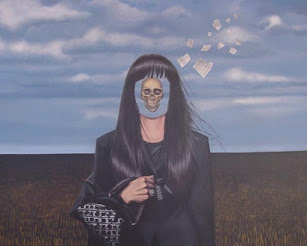Anon., A Bullock Cart Carrying a Cheetah, 1860
(December 16)Wednesday, December 02, 2020
Sunday, November 01, 2020
Thursday, October 01, 2020
Wednesday, September 02, 2020
Saturday, August 01, 2020
Wednesday, July 01, 2020
Monday, June 01, 2020
Friday, May 01, 2020
Wednesday, April 01, 2020
Sunday, March 15, 2020
Sunday, March 01, 2020
Saturday, February 15, 2020
Saturday, February 01, 2020
Signs: The Secret Language of the Universe, Laura Lynne Jackson
Roelof Louw, Soul City (Pyramid of Oranges), 1967
(January 17) Heard about this on Goop and read it mostly to see how it lined up with Abraham-Hicks philosophies. At first it didn't look too correlated at all: it was like Jackson believed the thing we need to know the most is that we are not alone, that loved ones who have passed on are not gone for good, that we are being helped from beyond the grave by individuals that we once knew.Their help, according to her examples, is usually not of a practical nature, but rather is in the form of signs that affirm an event or decision. An example was a stack of oranges Jackson was presented with after a talk went well, which, because of peculiar associations with deceased loved ones, had a lot of significance for her.
A disconcerting element was that most of the examples of people having experiences with signs from the Other Side seem to be Jackson's long-time personal friends, and a great deal of the advice coming from the Other Side seems to be about whether or not to have a child (the Other Side wants people to have the child 100 per cent of the time, interestingly).
So the book follows this trajectory for quite a while, kind of trying to prove anecdotally that there's an afterlife, when, suddenly, it switches to a discussion of energy shifting (vibrational life, in other words) and goes into what is all very much an Abrahams-Hicks vein... how gratitude leads to manifesting and so on and so on. So surprising!
Wednesday, January 01, 2020
Normal People, Sally Rooney
Tina Berning, Illustration for the New York Times, 2016
(December 14, 2019) I liked Conversations With Friends so much I couldn’t wait to get my hands on this, Sally Rooney’s latest book. As with the other, I mowed it down pretty quickly. There is just something so engaging about her people -- which are the same people as before, really, just in slightly different circumstances, and this is third-person narration. However, we’ve got the bright, quirky, naive girl who is smitten with the adorable but indecisive man who is equally smitten but can’t commit. It’s the weirdest love-story situation in the history of love-story situations, but I have enjoyed it twice now because of Rooney’s.... way.
Sometimes while reading it (them) I wonder if I’m charmed mostly by the lack of quotation marks, which sometimes makes it unclear exactly what people are saying aloud and what they are thinking to themselves or simply doing in the third-person narration. You can reread a passage and take a slightly different interpretation sometimes for the lack of quotation marks.
This is a darker version of the first relationship; there are some wrenching motivations behind some of the behaviours (whereas in Conversations With Friends it was all pure quirk and naiveté).
I know that these people and these relationships have existed in real life because Rooney is reconjuring a strong experience like Van Gogh painted sunflowers.
For all the reasons I liked Conversations With Friends, same here.
Subscribe to:
Posts (Atom)













